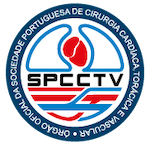CARBON DIOXIDE PRODUCTION DURING CARDIOPULMONARY BYPASS: CONTINUOUS MEASURE AND CLINICAL RELEVANCE
DOI:
https://doi.org/10.48729/pjctvs.99Downloads
References
Baker RA, Bronson SL, Dickinson TA, et al. Report from AmSECT’s International Consortium for Evidence- Based Perfusion:
American Society of Extracorporeal Technology Standards and Guidelines for Perfusion Practice: 2013. J Extra Corpor Technol 2013; 45: 156–166.
The Australian and New Zealand College of Perfusion. Regulations and Guidelines for Perfusionists. Available at:
http://esvc000803.wic050u.server-web.com/Documents/ANZCP%20Regulations.pdf. Accessed December 17, 2015.
Wasserman K, Whipp BJ, Casaburi R. Respiratory con- trol during exercise. In: NS Cherniack, JG Widdicombe (Eds), Handbook of Physiology, Section 3: The Respiratory System. American Physiological Society, Bethesda 1986, pp 595–619.
Pybus DA, Lyon M, Hamilton J, Henderson M. Measuring the efficiency of an artificial lung: 1. Carbon dioxide transfer.
Anaesth Intens Care 1991; 19: 421–443.
Alston RP, McNicol J. Oxygenator exhaust capnography: an in vitro evaluation. J Cardiothorac Anesth 1988; 2: 798–802.
Zia M, Davies FW, Alston RP, Anaes FC. Oxygenator exhaust capnography: a method of estimating arterial carbon dioxide tension during cardiopulmonary bypass. J Cardiothorac Vasc Anesth 1992; 6: 42–45.
Weightman WM, Sheminant MR. Oxygenator exhaust capnography as an index of arterial carbon dioxide ten- sion during
cardiopulmonary bypass using a membrane oxygenator. Br J Anaesth 2000; 84: 536–537.
Ranucci M, Isgrò G, Romitti F, Mele S, Biagioli B, Giomarelli P. Anaerobic metabolism during cardiopulmonary bypass:
predictive value of carbon dioxide derived parameters. Ann Thorac Surg 2006; 81: 2189 –2195
Mekontso-Dessap A, Castelain V, Anguel N, et al. Combination of venoarterial PCO2 difference with arteriovenous O2 content difference to detect anaerobic metabolism in patients. Intensive Care Med 2002; 28: 272–277.
de Somer F, Mulholland JW, Bryan MR, Aloisio T, Van Nooten GJ, Ranucci M. O2 delivery and CO2 production during cardiopulmonary bypass as determinants of acute kidney injury: time for a goal-directed perfusion man- agement? Crit Care
; 15: R192.
Dres M, Monnet X, Teboul J-L. Hemodynamic manage- ment of cardiovascular failure by using PCO2 venous- arterial difference. J Clin Monit Comput 2012; 26: 367–374.
Dijoy L, Dean JS, Bistrick C, Sistino JJ. The history of goal-directed therapy and relevance to cardiopulmonary bypass. J Extra Corpor Technol 2015; 47: 90–94.
Ranucci M, Aloisio T, Carboni G, et al. Acute kid- ney injury and hemodilution during cardiopulmonary bypass: a changing
scenario. Ann Thorac Surg 2015; 100: 95–100.
Ranucci M, Romitti F, Isgrò G, et al. Oxygen delivery during cardiopulmonary bypass and acute renal failure after coronary operations. Ann Thorac Surg 2005; 80: 2213–2220.
Assis-dos-Reis-Filho V, Lopes-de-Oliveira E, Scramim JF, Sanga MA, Arrais-dos-Santos M. Benefits of continuous monitoring of PCO2 obtained from a system applied to membrane oxygenator exhaustion of the cardiopulmonary bypass circuit. Rev Port Cir Cardiotorac Vasc. 2019; 26(3):205-208.






